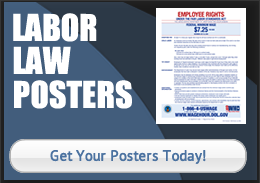Complete Story
09/25/2025
AutoBots: The Good, The Bad, The Ugly
Source: aftermarket MATTERS
No, these are not the heroic robots of the Hasbro toyline of comic creatures, automotive AutoBots run without restraint on social networks including X (formerly Twitter), Instagram, Facebook, TikTok, YouTube and even government websites.
Automotive AutoBots can perform neutral or helpful functions, such as customer scheduling or answering questions. However, a large and growing subset exists to generate fake engagement, spread falsehoods and promote spam or fraud.
Auto shops that depend on social channels to connect with customers or drive campaigns face increasing difficulty separating customer interactions from artificial noise. Malicious AutoBots can impersonate users, distort metrics, manipulate public sentiment and divert advertising.
Organizations such as Cloudflare and the Cybersecurity & Infrastructure Security Agency (CISA) have highlighted social media bots as key players of misinformation and fraud. Whether managing a media effort or defending a global reputation, the automotive service and repair industry confronts a clear mandate: recognize and mitigate the influence of social media before it distorts the truth or damages your business.
The Good:
By allowing AutoBots, you make it easy for customers to search for your services. Website discovery, also known as web crawling or spidering, is a process in which a shop’s computer systematically discovers and indexes topics on other websites.
A well-structured website with logical internal linking can help customers navigate and index pages more efficiently, improving overall Search Engine Optimization (SEO) performance.
- AutoBots are essential for connecting local searches with the shop’s online presence.
- AutoBots evaluate the internet to find and catalog webpages allowing crawlers to search your computer indexes. This increases the likelihood of the shop’s website appearing in search results when customers search for services.
- AutoBot search engines can better understand what the auto shop offers. This will influence how highly your site ranks in search results. Higher rankings can lead to more customers contacting or visiting the shop.
- AutoBots regularly revisit websites to discover new pages or updates. This helps to ensure that new service pages, blog posts or promotions are available through public search engines.
The Bad:
AutoBots, while offering legitimate benefits for auto shops like market analysis and competitive intelligence, can be for harmful purposes. Here are ways “bad actors” use websites:
- Scareware: Malicious software or deceptive tactics designed to trick shops into purchasing unnecessary or harmful software by creating a sense of panic or urgency. It often involves fake system alerts, imitation antivirus scans or browser warnings that claim your device is infected.
- Unfair Competition: Competitors can use AutoBots to automatically collect pricing data and marketing content to undercut prices and gain an unfair advantage.
- Data Scraping: Malicious crawlers can steal content like product photos, advertising materials, or unique service offerings from a shop’s website. The scraped content is repurposed by competitors, potentially diminishing the original shop’s online presence and brand reputation.
- Cyber Extortion: If personal information is publicly accessible on a shop’s website (e.g., in customer testimonials, employee profiles, or forum discussions), malicious AutoBots can collect it without consent. Phishing attacks or even cyber extortion can target staff or customers to demand money.
- Website Disruption: Malicious AutoBots can flood a shop’s website with automated requests, leading to inflated traffic numbers and skewed analytics. Aggressive scraping can even lead to website performance degradation or denial-of-service (DoS) attacks.
While legitimate crawlers respect “robots.txt” files that indicate areas off-limits for scraping, malicious crawlers will ignore them, potentially trying to exploit vulnerabilities in a website’s security to access sensitive data, like customer databases or proprietary business information.
The Ugly:
Below are examples of how bad actors or groups can use AutoBots:
- Malicious actors might scrape competitor websites to extract pricing data, allowing them to undercut prices and potentially disrupt fair market practices.
- Data Harvesting for Sale to Third Parties: This could involve scraping personal information like emails, phone numbers or social media profiles from automotive websites violating privacy.
- Scraping and copying copyrighted content from automotive websites, such as articles, images, or product descriptions, without permission of brand and search engine rankings.
- Ransomware Attacks: Bad actors use web crawling to identify shutdown vulnerabilities in shop systems. This could lead to a shop held hostage in exchange for a ransom payment.
- Server Attacks: Aggressive web scraping can overload website servers, potentially causing denial-of-service (DoS) or distributed denial-of-service (DDoS) attacks.
Takeaway:
Automotive shops must take steps to protect themselves from malicious software:
- Implement security measures: Use tools and techniques to detect and prevent malicious AutoBots activity, such as CAPTCHAs, IP bans, and advanced bot management solutions.
- Regularly monitor website activity: Keep an eye on website traffic and server logs to identify unusual or suspicious crawling behavior.
- Be mindful of publicly available information: Avoid posting sensitive personal or business information publicly on the website for anyone with access to the internet.
- Adhere to ethical and legal guidelines for data collection and usage: Avoid violating privacy laws, copyright, and website terms of service.
By understanding the potential risks and adopting initiative-taking measures, automotive shops can harness the benefits of online visibility while safeguarding their business from the malicious use of AutoBots.





